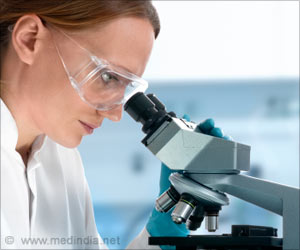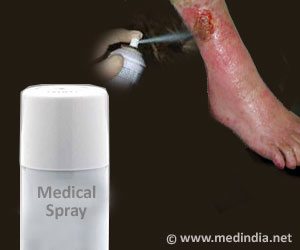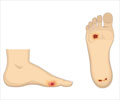Highlights
- Chronic wounds that include diabetic ulcers, pressure sores, surgical site wounds and traumatic injuries, occur when healing fails to progress normally and persists for more than 30 days.
- The current split-thickness skin grafting method used for treatment of chronic wounds is painful, time consuming and leaves donor site wounds that refuse to heal.
- A recently developed and marketed epidermal autograft harvesting system results in much faster healing of chronic wounds which also helped reduce chances of wound recurrence and health care costs.
Chronic Wounds and Current Treatment
Most cases of chronic wounds include diabetic ulcers, pressure sores, surgical site wounds and traumatic injuries to high-risk patients.
Findings from a University of Missouri School of Medicine indicates that a recently developed skin-graft harvesting system helps in chronic wound recovery by speeding up the healing process and reduces care costs.
"Chronic wounds occur when healing fails to progress normally and persists for more than 30 days," said Jeffrey Litt, D.O., assistant professor of surgery at the MU School of Medicine and lead author of the study.
But these methods are not enough to ensure complete wound closure.
Rapid healing of these wounds would result in decreased complications, decreased wound care requirements, and earlier return to daily activities, rapidly reducing the burden and cost of care.
Split-thickness skin grafting currently is the gold standard for treating traumatic and burn injury-related skin loss.
The current surgical procedure for split-thickness skin grafting involves removing the top two layers of skin from a healthy donor site, and transplanting the tissue to an injured area.
The drawbacks of this method is that it must be performed in an operating room and the technique is limited by the availability of donor skin. It is painful, time-consuming, and leaves significant donor site wounds donor sites that can become chronic wounds.
"Current treatments such as moist dressings, frequent irrigations and wound cleaning are not always enough to ensure that healing occurs in high-risk patients. Although a skin graft can be used to close a wound that refuses to heal, the surgical technique usually is painful, time-consuming and leaves significant donor site wounds." Litt added.
Epidermal Autograft Harvester
A recently developed and marketed epidermal autograft harvesting system was performed in an outpatient clinic setting at the university hospital on 13 patients with various types of chronic wounds.
The types of wounds included diabetic ulcers, venous or lymphedema-related ulcers, surgical site wounds, and traumatic wounds.
Five patients had leg ulcers with venous stasis or lymphedema, two had traumatic wounds, and three were diabetes-related wounds. Three wounds were at surgical sites, including one burn graft failure area, one neurosurgical dehiscence, and one abdominal wound with granulated mesh.
The researchers evaluated the clinical outcomes and associated costs of the minimally invasive approach and compared it with the potential costs of continued wound care without autograft placement.
The results showed that the healing rates were 62% with :
- eight of the 13 patients had healed within four months of which four healed within a month
- two were lost to follow-up
- three have wounds that remained open
The results also showed significant less donor site damage and little to no pain.
Following this, the patients' care, clinical outcomes and costs were evaluated.
"Four of these patients fully healed in less than one month. Additionally, the comparatively rapid closure of the open wounds also reduced health care costs by an average of $1,153 per patient and $650 to the burn and wound program." Litt added.
High risk patients like diabetics, face a common problem of wound recurrence. The research team noted that the accelerated healing also resulted in no wound recurrence.
"We have been using this minimally invasive autograft technology for more than a year, and it is well tolerated by our patients and easy to use by our team," Litt said. "Given that, and the health care cost savings, we feel that this new approach to wound care is beneficial to everyone, and we will continue to evaluate outcomes."
The study, "Clinical Usage and Economic Effectiveness of a Recently Developed Epidermal Autograft Harvesting System in 13 Chronic Wound Patients in a University-based Wound Center," was published in The Cureus Journal of Medical Science.
Reference
- Jeffrey Litt et al. Clinical Usage and Economic Effectiveness of a Recently Developed Epidermal Autograft Harvesting System in 13 Chronic Wound Patients in a University-Based Wound Center. The Cureus Journal of Medical Science; (2017) DOI: 10.7759/cureus.878
Source-Medindia










